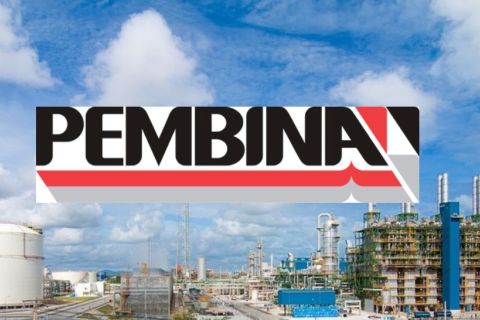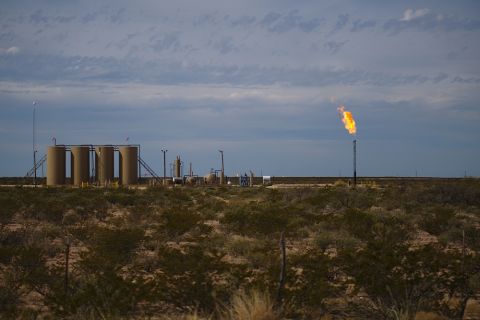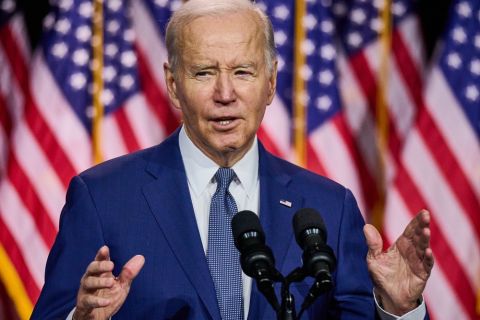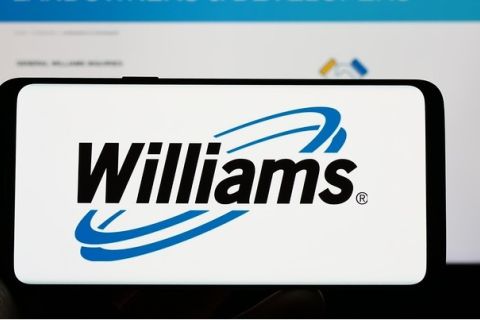 Operators know the island nation's potential, but they have to deal with the uncertainty.
Operators know the island nation's potential, but they have to deal with the uncertainty.Major oil companies bypassed Madagascar in times past, but now it's on ExxonMobil's short list of hot offshore prospects, and the latest licensing round has drawn interest from other major oil companies as well, but onshore prospects offer high potential, too.
The island off the east coast of Africa is slightly larger than France, but operators drilled only 75 wells there and only about 10 were offshore. On the downside, 65% were dry holes, according
to a Wood Mackenzie report titled, "Madagascar-Diversifying into Oil and Gas." On the upside, the other 35% found at least shows of oil or gas. Only one well qualified as a gas discovery.
Offshore
Credit Vanco Inc. for showing the way to offshore potential. It acquired the license for the Majunga Profond block in 2001, shot some 2-D seismic and started showing off potential salt-trap structures and salt delineations.
Operators, including ExxonMobil, thought it looked a lot like offshore Nigeria or Angola. ExxonMobil and Norsk Hydro farmed in to the block for 40% and 30%, respectively, and Vanco further reduced uncertainty with a 3-D seismic survey.
Norsk Hydro dropped out of the team, but Vanco sold out its share with 30% going to BG, 20% going to South Korea's SK Corp. and the remaining 10% bolstering ExxonMobil's share.
ExxonMobil also picked up the Cap Saint Andre block immediately west of Majunga Profond, making it the biggest property holder in the nation with interests in more than 23,166 sq miles (60,000 sq km) all off the northwestern coast.
Current plans call for ExxonMobil to drill the Majunga Profond block next year and the Cap Saint Andre block the following year.
"The prospects are very high-risk, but the structures are big, and drilling will provide the proof," said Catriona O'Rourke, West Africa research analyst with Wood Mackenzie. "BG is hoping to find big gas structures," she added.
There are few markets in West Africa, but the companies could build a liquefied natural gas plant and sell gas to India and China if supplies are large enough. If they find oil in 2007, the lead time typically would be 6 to 10 years with a floating production, storage and offloading platform, but a fast-track project could come online in 3 to 4 years, she said.
Gas and hydrogen from offshore operations also could help produce heavy oil properties onshore.
Sterling Energy's Ambilobe and Ampasindava blocks finish out the properties off the northwest coast. According to a Deutsche Bank report titled "Escape from a US onshore zoo," it is processing 2-D seismic shot by TGS-Nopec with plans to follow up with 3-D seismic, if the leads look good, and drill in 2008.
All that fuss has gathered a crowd, and Madagascar's state oil and gas organization, Omnis, opened up the opportunity with a licensing round for 112 offshore blocks off the northeast and southwest coasts. Among those at the launch of the licensing round were representatives from BP, Shell, Eni, Murphy Oil, Petronas and Repsol YPF, Wood Mackenzie said.
Onshore
The offshore fuss tended to obscure the onshore potential in the country where Madagascar Oil is the equivalent to ExxonMobil Offshore. The company, through its Madagascar Oil SA subsidiary, holds blocks 3102, 3104, 3105, 3106 and 3107. Its Majunga Oil SARL subsidiary holds Block 2103 and a share of Block 3109 with Tullow. Excluding the partial block, Madagascar subsidiaries control some 21,236 sq miles (55,000 sq km) of licenses, including two oilfields with an estimated 30 billion bbl of heavy oil on blocks 3102 and 3104. O'Rourke added, "The 30 billion is conservative, but it's not commercial until you get it out of the ground. Ease of extraction is key."
The other blocks held by Madagascar, Amicoh and Tullow show potential for lighter, conventional oil. Madagascar had onshore Block 2102 and offshore Block 4001, but it turned them back in to Omnis.
Sam Malin, Madagascar Oil's chief executive officer, came across the nation's potential in 1993 as a geophysicist. He found a lot of heavy oil. He found more investors in 2003 and picked up six onshore blocks. He has a half interest in another block with Tullow Oil.
The main assets are the shallower Tsimiroro field with 14°- to 16°-gravity oil and the deeper Belomlonga field with even heavier 8°- to 13°-gravity oil.
Malin's plan of action consists of three basic parts. First, he has been exploring across the licenses. Both fields have active seeps, an indication of mobility.
Second, he plans to develop the heavy oil at Tsimiroro. With the deposit lying at about 500 ft (152.4 m), he will use the steam-assisted gravity drainage (SAGD) technique that has been successful in Canada. That deposit should be producible with 46 wells.
In the third phase, he will go after the ultra-heavy oil at Belomlonga, probably using mining techniques. If the company uses wells, it could drill as many as 500.
Each field contains billions of barrels of oil, he said, and he hopes to get between 12% and 50% of the oil in place.
The Canadian heavy oil fields require a lot of natural gas to heat water to produce steam to produce oil. Fortunately, Madagascar's single discovery, the West Manamamdolo natural gas well, tested at 15 MMcf/d, also is on the company's Morondava Basin property not far from the heavy oil fields. Reserves, based on that single well drilled in 1987, were set at 70 Bcf. Alternatively, the company could use diesel fuel to start the steam injection and burn heavy oil thereafter.
The company is coming to the end of its first exploration phase. It has reprocessed existing geophysical information and acquired new data. The analysis of that data should offer the company a drilling plan, Malin said.
In the heavy oil field, the company has imported a drilling rig, and an appraisal/production drilling program has started. The first wells, he said, ought to show the company how the reservoir behaves and help determine the production technique. In addition to SAGD, Madagascar is considering cyclic steam injection.
At the ultra-heavy oil field, the company is coring wells and conducting geophysical work. Because of the size of the field, the company is looking for an "appropriate partner. We need to do justice to the country and the asset," he added.
Because of the uncertain economics, development work will be slow in the heavy oil fields. Malin plans first oil production from Tsimiroro next year, but it will be at subcommercial levels initially.
Assuming the early work is successful, he expects a commercial operation around 2010. The company has a number of companies interested in investing in the shallower field, "but at this stage, we plan to develop it ourselves," he said. The company has approximately 50 employees in the office and in the field.
A heavy oil operation probably would require production of 10,000 b/d. One analysis showed it would earn a 15% return at 9,000 b/d.
Malin was impressed with Madagascar's approach to licensing in the current round, which closes Nov. 15. It is standardizing its terms with a technique that gives Omnis an overriding royalty with a sliding-scale percentage. That scale is not negotiable.
It starts at 8% on the first 25,000 b/d of production and increases in stages to 20% on production of more than 130,000 b/d of oil. For gas, the scale starts at 5% on the first 424 MMcf/d
(12 MMcm/d) of production and rises to 10% on 848 MMcf/d (24 MMcm/d) of production.
The state will levy a 30% tax on profit petroleum, and the operator can get 60% of recovered petroleum per year for cost recovery.
In judging bids, the state regulator will apply a 55% bid weight to the companies' technical capabilities, financial resources and exploration work program. Another 35% of the weight will go to the profit split the bidding company offers the state. The final 10% will weigh the bidding company's plans to use local people, suppliers and services, Wood Mackenzie said.
Summarizing, Wood Mackenzie said, "Although the blocks on offer are very high-risk, the timing of the licensing round is good as the high oil price means companies have money to spend on exploration. In addition, acquiring acreage in other parts of the world is becoming increasingly difficult with huge signature bonuses and/or harsh fiscal terms being bid.
"The fact that Madagascar is offering attractive fiscal terms and that no signature bonus is required may lure both large and small companies alike to explore in its acreage. However, there is the danger that most of the best acreage is already licensed and that only the highest-risk frontier blocks remain."
Recommended Reading
Pembina Pipeline Enters Ethane-Supply Agreement, Slow Walks LNG Project
2024-02-26 - Canadian midstream company Pembina Pipeline also said it would hold off on new LNG terminal decision in a fourth quarter earnings call.
Waha NatGas Prices Go Negative
2024-03-14 - An Enterprise Partners executive said conditions make for a strong LNG export market at an industry lunch on March 14.
EQT CEO: Biden's LNG Pause Mirrors Midstream ‘Playbook’ of Delay, Doubt
2024-02-06 - At a Congressional hearing, EQT CEO Toby Rice blasted the Biden administration and said the same tactics used to stifle pipeline construction—by introducing delays and uncertainty—appear to be behind President Joe Biden’s pause on LNG terminal permitting.
Williams Beats 2023 Expectations, Touts Natgas Infrastructure Additions
2024-02-14 - Williams to continue developing natural gas infrastructure in 2024 with growth capex expected to top $1.45 billion.
Wayangankar: Golden Era for US Natural Gas Storage – Version 2.0
2024-04-19 - While the current resurgence in gas storage is reminiscent of the 2000s —an era that saw ~400 Bcf of storage capacity additions — the market drivers providing the tailwinds today are drastically different from that cycle.





